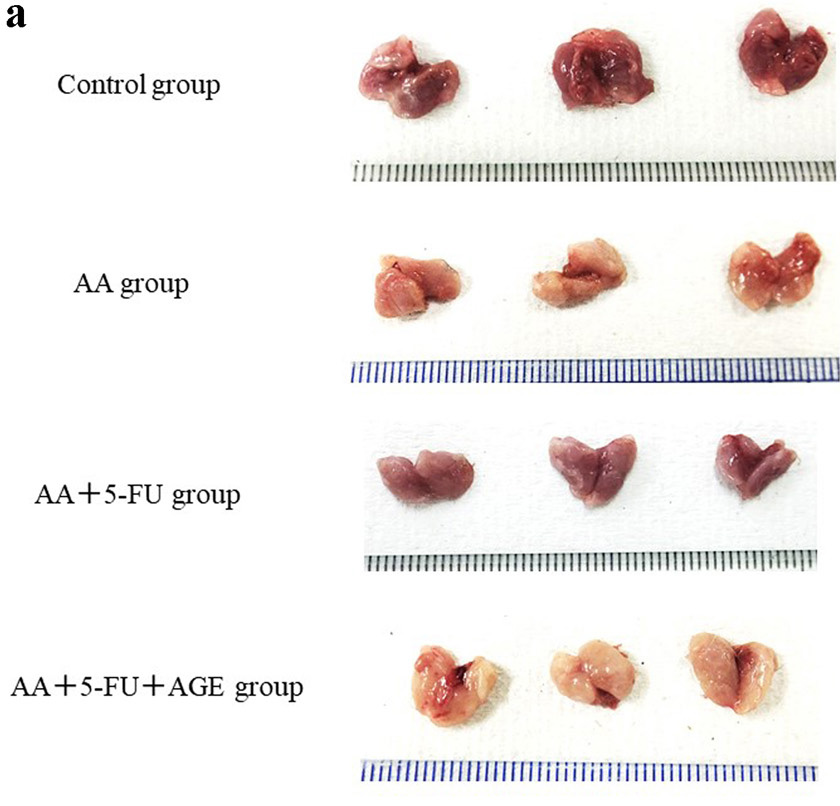The Healing Effect of Aged Garlic Extract on Acetic Acid and 5-Fluorouracil-Induced Oral Mucositis in Mice
DOI:
https://doi.org/10.14740/jocmr6341Keywords:
Aged garlic extracts, Oral mucositis, 5-fluorouracil, Acetic acid, Salivary glandsAbstract
Background: This preliminary study investigated the effect of aged garlic extract (AGE) on acetic acid (AA) and/or 5-fluorouracil (5-FU)-induced oral mucositis in tumor-bearing mice, and whether AGE affects the antitumor activity of 5-FU.
Methods: There were four mouse groups: control, AA, AA + 5-FU, and AA + 5-FU + AGE. Mouse squamous cell carcinoma cells (SCCVII) were used to develop tumors in mice, except for the control group. Oral mucositis was induced in tumor-bearing mice by intraperitoneal injection with 5-FU (18 mg/kg) for 9 days and/or topical application of 50% AA to the dorsal tongue for 1 day. Mucositis was treated with AGE (2.0 g/kg/day) for 10 days in AA + 5-FU + AGE group, while the other groups received saline (0.2 mL/day). The wound healing and antitumor effects of AGE were examined. Whole transcriptome analysis and ingenuity pathways analysis (IPA) of the tongue and tumor samples were used to investigate the mechanisms behind the wound healing and antitumor effects of AGE.
Results: Body weight was increased significantly in AA + 5-FU + AGE group compared to AA + 5-FU group. Moreover, tumor volume was significantly decreased in AA + 5-FU + AGE group than that in the other groups. In AA + 5-FU group, toluidine blue-positive area (wound area) in the tongue was the largest, and the size and weight of the salivary glands were decreased compared to other groups. In contrast, wound area was significantly reduced, and the size and weight of the salivary glands were increased in AA + 5-FU + AGE group compared to AA + 5-FU group. Therefore, AGE treatment could heal tongue ulcers and salivary gland damage in AA + 5-FU + AGE group. Whole transcriptome analysis and IPA data suggested that AGE could heal 5-FU-induced oral mucositis by promoting normal cell differentiation and keratinization, and it may also enhance the antitumor effects of 5-FU through the activation of B cells in mouse tumors.
Conclusion: AGE could alleviate AA and 5-FU-induced oral mucositis in mice while potentially enhancing the antitumor activity of 5-FU. Therefore, AGE might be useful in the treatment of oral mucositis in cancer patients receiving 5-FU-based therapies.

Published
Issue
Section
License
Copyright (c) 2025 The authors

This work is licensed under a Creative Commons Attribution-NonCommercial 4.0 International License.










